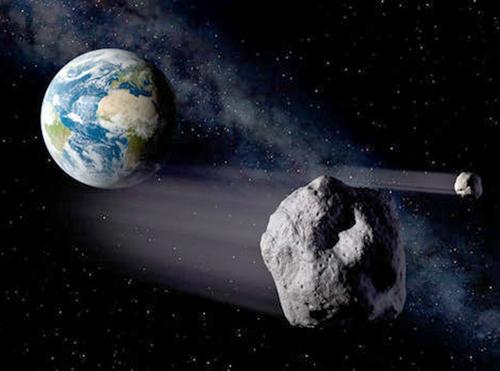You are here
How scientists solved the strange case of the missing asteroids
By Los Angeles Times (TNS) - Feb 28,2016 - Last updated at Feb 29,2016
A couple years ago, astronomers made a surprising discovery: A significant number of asteroids were missing from the central region of the solar system.
The space rocks were plentiful in the asteroid belt between Mars and Jupiter, and they appeared in their expected numbers around the neighbourhood of Earth, Venus and Mercury. But in the zone closest to the sun, there were lots of no-shows.
For every 10 asteroids they expected to find within 10 solar diameters of the sun, they could only spot one.
So, where had they all gone?
In a paper published in Nature, the scientists say that the asteroids appear to be disintegrating when they get too close to the sun, leaving a trail of space rubble in their orbital wake.
The researchers didn’t set out to go on an asteroid hunt. Their initial goal was to create a new and improved model of all the near-Earth objects (NEO) in the solar system.
A NEO is exactly what it sounds like — a comet or asteroid with an orbit that takes it into the vicinity of our planet.
Most of the asteroids that wander into our part of the solar system come from the doughnut-shaped space between the orbits of Mars and Jupiter known as the main asteroid belt. This region of the solar system is home to about 1 million asteroids more than 800 metres in diameter, and many more even smaller than that.
The majority of these space rocks stick to their normal orbits for billions of years, but every once in a while the gentle force of solar radiation pushes one of them into a place where they begin to interact with the gravity of Jupiter or Saturn. When that happens, the asteroid’s orbit grows more elliptical, sending it into the Earth’s neighbourhood.
To create a more accurate map of the NEO circling around the solar system, the researchers used observations of 9,000 NEOs detected in about 100,000 images taken over eight years from the Catalina Sky Survey.
The new model did a great job of matching the data in almost all areas of the solar system except for in the part closest to the sun, said Robert Jedicke of the University of Hawaii Institute for Astronomy and an author on the paper.
“If we weren’t scientists, we might have said it’s close enough, but something didn’t feel right,” he said.
So the team went back to work. For another year, they checked and double checked their calculations, until they had convinced themselves that the discrepancy they saw between their model and the data was real.
Next they had to figure out where all the asteroids they expected to see had gone.
Study leader Mikael Granvik, a research scientist at the University of Helsinki, proposed that the asteroids must be disappearing once they got close to the sun, but long before they would have plunged into it.
Further research supported this hunch. Going back to the CSS data, the astronomers found that smaller asteroids seem to disappear farther from the sun than larger asteroids. They also discovered that brighter asteroids, which reflect more light, seemed to stay intact closer to the sun than dark asteroids that absorb light.
If thermal forces are responsible for the break-up of the asteroid, “that’s exactly what you would expect to see”, said Jedicke.
The authors can’t say for certain what causes the asteroids to break up when they get close to the sun, but they lay out a few possibilities in the paper.
For instance, the intense radiation from the sun could be causing the asteroids to spin up their rotation rate to the point where gravity and cohesive forces can no longer keep them together.
It is also possible that as the asteroid flies close to the sun its surface becomes hot enough to cause thermal cracking, similar to what you might see in mud that has been baked by the sun.
Finally, the scientists wonder if all asteroids might contain volatile elements that can sublimate (go directly from solid to gas) in moderate temperatures and exert enough pressure to cause the body to explode.
But all these are just lines of future inquiry, Jedicke said.
“We really steer away from speculating too much about the mechanisms by which they are disappearing,” he said.
“What our data shows is there is a deficit of objects close to the sun, and the fact that we can see that deficit means they have to disappear quite rapidly.”
The researchers add that the discovery could explain the origin of meteor showers that have no known parent object.
If the Earth passed through the stream of debris left in the wake of an exploded asteroid, bits of this busted up space rock would burn up in our asteroid and cause shooting stars in the night sky.
Related Articles
WASHINGTON — Astronomers on Tuesday announced the discovery of ten more moons of Jupiter, bringing to 79 the number known to be circling the
By Qasim NaumanAgence France-Presse SEOUL — The largest asteroid to pass by Earth this year has made its closest approach, posing no th
Icy comets may have a reputation for being the inner solar system’s ancient water delivery system, but a new study finds that most of the wa


















